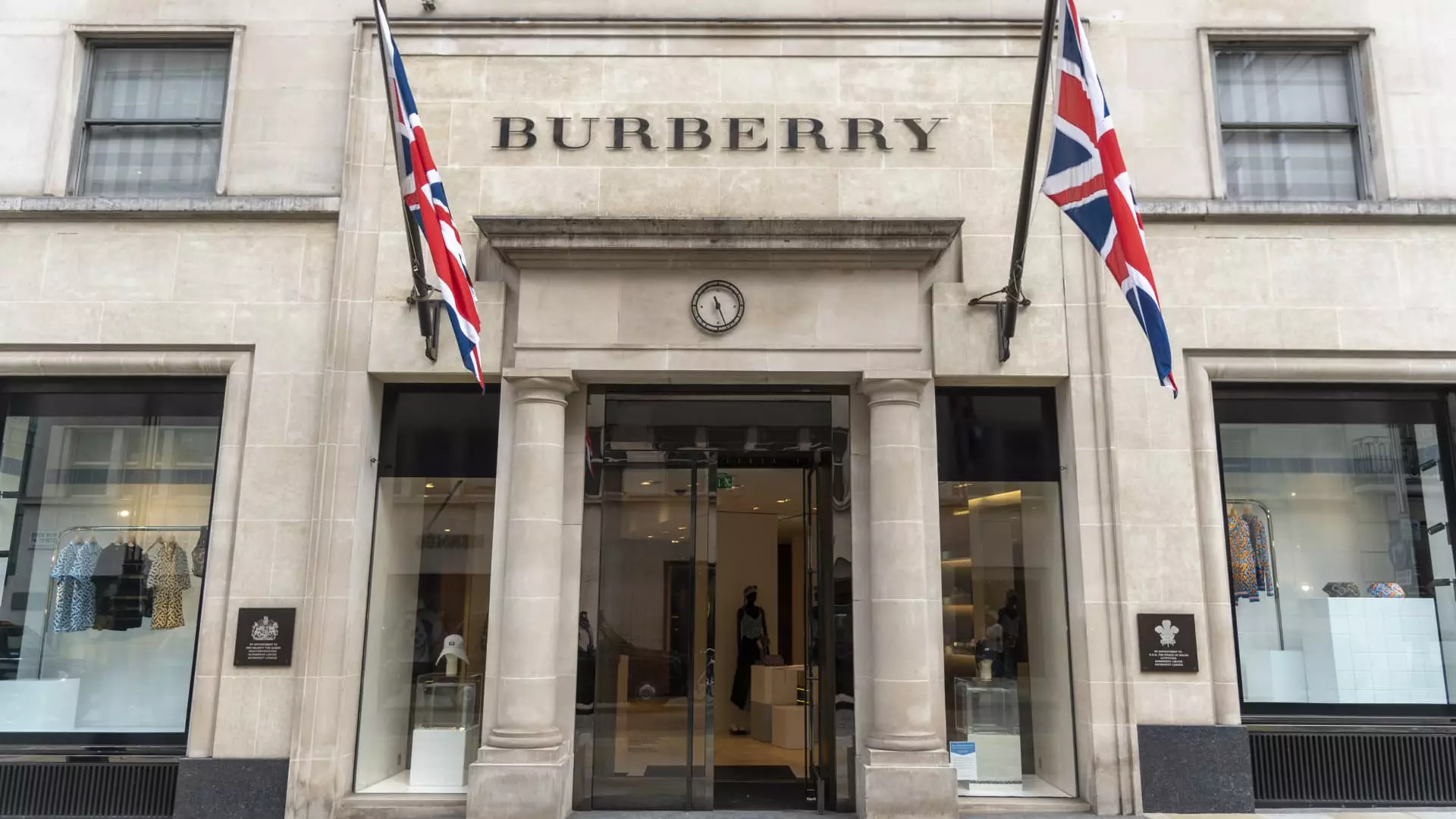British luxury fashion house Burberry Group has faced a significant setback as it dropped out of the U.K.’s FTSE 100 stock market index. This move comes as a result of waning sales and a series of management changes within the company. The 168-year-old retailer’s slide into the FTSE 250 during September’s quarterly rebalancing signifies the end of its 15-year run in the U.K. large-cap FTSE 100 blue-chip index. The market has not been favorable towards Burberry, with its share price plummeting more than 53% this year and around 70% lower over the last 12 months. The company’s current market cap of £2.34 billion ($3.06 billion) has fallen well below the other constituents of the FTSE 100, leading to funds that invest in the FTSE 100 exiting their Burberry holdings.
Founded in Basingstoke, England, in 1856, Burberry rose to international fame with its iconic collection of trench coats, handbags, and signature check print. Their addition to the FTSE 100 in September 2009 was seen as a testament to Burberry’s enduring appeal and resilience, even through global economic turmoil. However, the brand faced challenges as its high-end aesthetic was diluted by the widespread adoption of its iconic pattern by the British working class. This shift in consumer perception dealt a significant blow to Burberry’s image, causing it to struggle in regaining its status as a luxury brand.
Burberry has seen a revolving door of CEOs in the last decade, with four individuals taking on the role within a short span of time. The latest appointment of Joshua Schulman as CEO hints at a change in direction for the struggling company. Schulman’s background at Coach and Michael Kors suggests a potential shift towards a “British Coach” strategy to revitalize Burberry’s fortunes. This approach would focus on reducing costs, expanding outlets, and increasing exposure to off-price retailers, offering a fresh perspective on how to navigate the challenges facing the brand.
Amid a 21% decline in first-quarter comparable store sales, Burberry issued its third profit warning in 12 months and suspended dividend payments. Analysts have expressed concerns about further share price declines if significant changes are not implemented soon. The possibility of a takeover looms as a potential outcome for Burberry if the company does not manage to reverse its downward trajectory. However, if Schulman’s leadership and strategic shifts prove successful, the likelihood of a takeover could diminish, offering a glimmer of hope for the brand’s future.
Burberry’s struggles are not unique, as the luxury sector as a whole has faced challenges due to a downturn in consumer spending, inflationary pressures, and economic uncertainties. Chinese luxury consumption, in particular, has suffered, impacting brands like Hugo Boss and Kering. Despite these setbacks, certain players in the ultraluxe segment, such as Richemont and Hermes, have managed to maintain strong performance. The cyclical nature of the luxury sector underscores the ongoing opportunities for brands like Burberry to recover and thrive in a competitive market landscape.
Burberry’s journey from the FTSE 100 to the FTSE 250 reflects the broader challenges facing the brand in a rapidly evolving luxury market. With new leadership at the helm and strategic shifts on the horizon, Burberry has the potential to navigate its current crisis and reinvent itself for a new era of consumer preferences. The upcoming half-year financial results will be a significant milestone in assessing Burberry’s progress and determining its path forward in the competitive world of luxury fashion.

